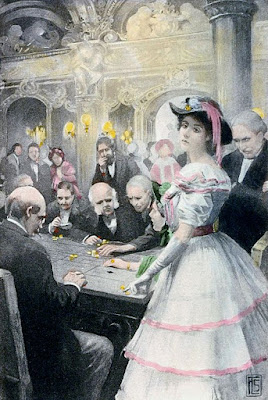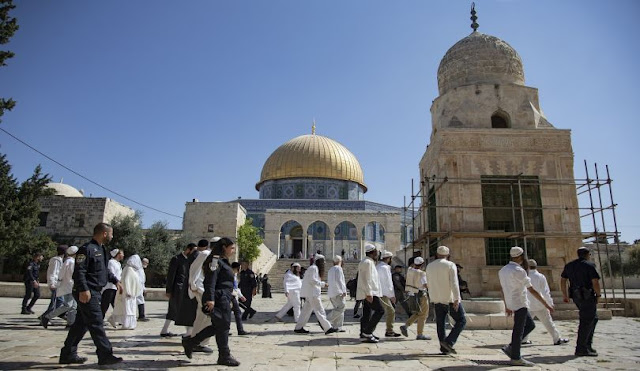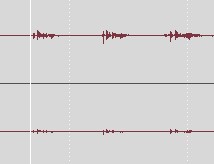Jonathan Tobin: How Jewish support for ‘anti-racism’ empowered anti-Semitism
While the idea that black lives matter was never up for debate, it was in that atmosphere that so much of the organized Jewish world felt impelled to sign on to support for the movement itself. That seemed like a cost-free gesture that allowed Jewish groups to virtue signal their opposition to racism. What they didn’t count on was the way this effort helped intersectional ideology, which falsely analogizes the Palestinian war on Israel to the struggle for civil rights in the United States, to become the guiding force behind an increasingly powerful left wing of the Democratic Party.Gil Troy: Zionist behavioral therapy can end antisemitism
In this way, the catechism of diversity, equity and inclusion (DEI) became not just pervasive on college campuses but the official policy endorsed by President Joe Biden on his first day in the White House in January 2021. Biden’s equity agenda, which is now being implemented in every government department, isn’t about promoting equality. In this context, equity means the opposite. It mandates racial discrimination while promoting the “white privilege” narrative in which Jews are transformed from a minority that is under attack from anti-Semites on both the left and right into part of an oppressor class. It allows an anti-Semitic BDS movement to similarly play the victim while the objects of its discriminatory campaign are treated as villainous opponents of “people of color,” despite the fact that the majority of Jewish Israelis trace their origins to the Middle East and North Africa.
Those voices raised against Jews—whether in academic settings where DEI has become inextricably linked to increased anti-Semitism, on the floor of Congress where the left-wing “Squad’s” embrace of lies about Israel has led to violence on American streets or in the mainstream media where anti-Zionism acts as a cover for anti-Semitism—have grown louder and more accepted in the last two years.
Legitimizing such a movement may not have been the intention of the Jewish leaders who signed declarations supporting BLM. Racism is terrible and opposing it is laudable. But by going along with the mob mentality that embraced the “1619” lies and legitimized a heretofore radical BLM movement, that’s exactly what they helped foster. That many of them also attacked and sought to treat those Jews who spoke up against it, such as the Zionist Organization of America, as beyond the pale is even more disgraceful.
The organized Jewish world needs to take a hard look at its mistakes and admit that its desire to play the fashionable “anti-racist” card strengthened forces that are inimical to Jewish interests, as well as to the cause of equality and racial harmony for American society. If the Jewish community is to successfully confront the rising tide of anti-Semitism on the left that the BLM moment empowered, there must first be a reckoning about why these groups failed to stand their ground against this dangerous trend in 2020.
Psychology of bigotryThe 'Nakba' - catastrophe or success? - comment
Psychologists have long shown how perverse perceptions imprison people in misanthropic misconceptions. CBT – cognitive behavioral therapy – helps patients reframe their understandings of reality. Beware mental filters, therapists warn, brain fritzes blocking or shrinking the good, the generous, the comforting, while locking in and overinflating the bad, the negative, the unnerving. Such reframing, such brain fixes, reprogram what people see to be more accurate and constructive.
Instead, regarding Israel, many prefer de-framing – reframing reality to defame. Popular anti-Zionist perversions include:
Stretching: Anti-Zionists love “kitchen-sinking,” throwing everything at Israel, including the kitchen sink. As bogeymen rise and fall, fanatics try hogtying Israel to the big crime of the moment or the latest, trendiest ideological sin, like the Great Replacement theory, just as Israel is forever accused of racist, imperialist, colonialist crimes other powers committed, not Israel.
Indicting: Any mistake any Israeli makes, or any crime any Israeli commits, supposedly justifies Israel’s permanent place in the dockets of the UN, the International Criminal Court, and much of the human rights community. Somehow, mini-Israel looms super-large in the craziest worst-case scenarios of the far Left and the far Right.
Catastrophizing: It’s all black-and-white, totally bleak, regarding Israel. Too many conversations about Israel become no-nuance and complexity-free zones. Anything Israel does ends up integrated into some systematic conspiracy against the always blameless Palestinians. A journalist can die accidentally in a firefight, yet anti-Israel congresswomen declare that Israeli snipers targeted her, as though these 20-year-old soldiers fighting for their lives knew who she was – or cared.
Calcifying: For anti-Zionists making up twistory, time stands still, nothing ever changes, progress must be ignored. It’s too much fun to keep shrieking about “Deir Yasin” and the supposed “Nakba,” as though it’s still 1948. And it’s too tempting to ignore Israel’s many attempts to make peace with Palestinians, its breakthroughs with Egypt, Jordan, the UAE, Morocco, and the Sudan, let alone countries like Saudi Arabia, which informally cooperate with the “Zionists.”
In the intervening 70+ years the Nakba, or catastrophe, which Zurayk emphatically defined as the failure of ineffectual Arab states, who sought “the abolition of partition and the eradication of Zionism” only to “leave the battle having lost a not inconsiderable portion of the soil of Palestine” has been disingenuously redefined as the expulsion of Palestinians from part of the proposed State of Palestine.
In fact, in his book Zurayk made no mention of the Palestinians as a people or the formation of the State of Israel. The Nakba was the self-inflicted wound of the Arabs, not of Israel.
The politicized hijacking of a term the Nakba which bemoaned the absence of pan-Arab unity and castigated Arabs for their failings, into a term of abuse against Israel is a calculated and continuous act of deception, designed to absolve Arab states of blame and condemn Israel for successfully defending itself against attack.
Zurayk’s dismal conclusion on the outlook for Arab youth was as prescient as it was depressing. He accurately predicted that the absence of Arab unity would cause future generations to “fall prey to some destructive movement and find their consolation in uproar and disturbance for its own sake, regardless of the result”. Seventy years later, the pointless brutality of Hamas, Hezbollah and the PLO shows just how devastating the Nakba, or Arab failure, has been for Arab hope and Arab lives.
Unwilling to establish lasting peace
The recent treaty known as the Abraham Accords, which saw the four Arab Gulf states, the UAE, Bahrain, Sudan and Morocco, formally establish diplomatic relations with Israel, left the Palestinians looking isolated in the Middle East. Sadly, their isolation is self-inflicted. The Sunni Arab world is moving on and refusing to accept a veto from the West Bank or Gaza in the face of a growing threat from Iran.
In the absence of any movement on peace talks or willingness by Palestinians to negotiate, standing by the Palestinians is no longer a priority for the Gulf States, as protecting themselves from Iranian aggression is.
While most Palestinians are weary of their corrupt, ineffectual leaders and would welcome the chance of elections and a fresh start, neither seems to be on the agenda. 87 year old Palestinian President Mahmoud Abbas probably isn’t the solution to constant factional infighting and endemic corruption, so in all likelihood, the Palestinian politics of grudge and grievance will continue.
Today, Palestinians and their apologists worldwide should stop to consider these realities and face up to the fact that the Nakba describes their failure, not Israel’s success.


















































